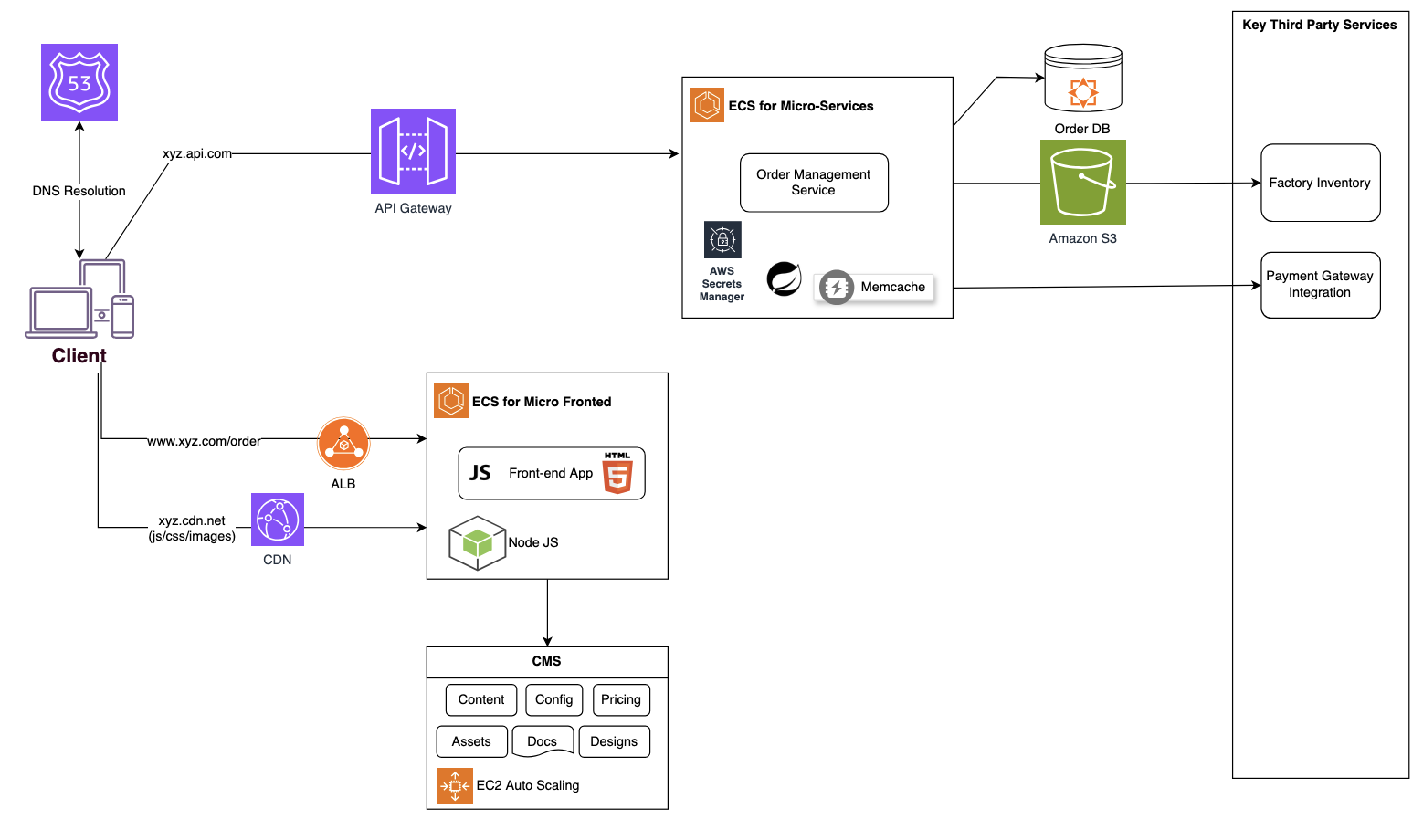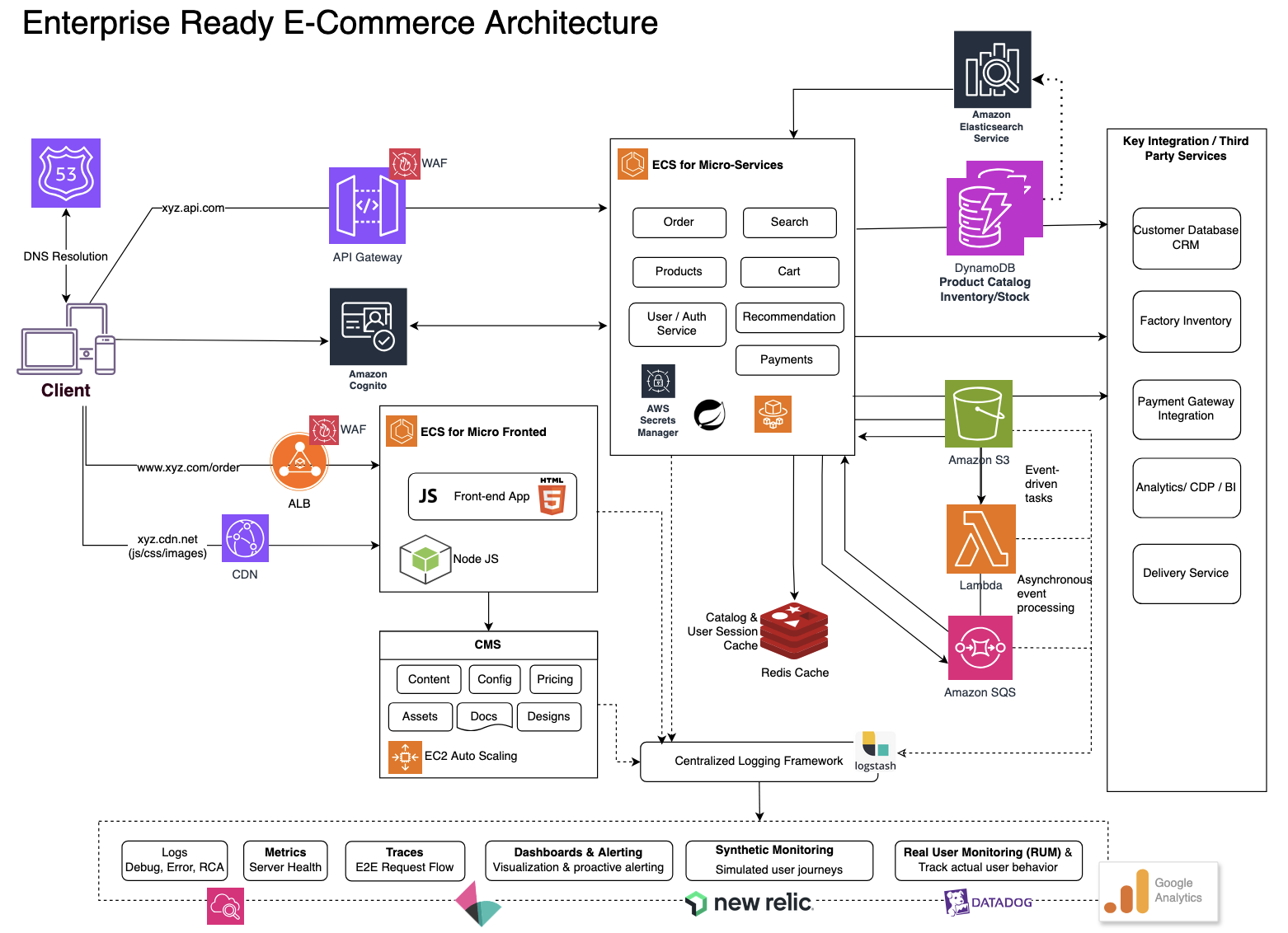Evolving an E-Commerce Architecture: From MVP to Enterprise-Ready
#Incremental Architecture: Building on Needs, Not Just Design
Architecture rarely arrives fully formed. Instead, it is shaped by real-world constraints, shifting business opportunities, and the scale of user adoption. How smooth that journey is—from MVP to enterprise-grade—largely depends on the foundational elements you establish early. A solid foundation doesn’t mean over-engineering—it means designing for adaptability and clarity, so the system can scale without breaking.
In my experience across various solution design discussions and architectural evaluations, one pattern has remained constant—needs evolve. Whether it’s adapting an existing system to support new markets, or integrating new features based on customer demand, architecture must respond dynamically. Over time, I’ve realized that what we often call incremental architecture isn’t just a design philosophy—it’s a real-world decision-making approach driven by necessity.
Let me walk you through one such evolution—from a simple pre-order system for a single-market car launch to a globally distributed e-commerce platform. The architecture didn’t leap overnight. It matured over four distinct phases: MVP, Core, Platform, and Enterprise—each designed to meet the real-world needs of that stage.
Phase 1: MVP – The Quick Start
Goal: Launch fast with essential pre-order functionality.
Our journey began with a simple, pragmatic approach. We built:
CMS (Monolith): Managed all content, site rendering, assets, car configuration, pricing, and marketing.
Frontend: The CMS also rendered HTML/JS/CSS for the web interface.
API Layer: A single monolithic Java-based order management system, exposed through an API Gateway.
Database: #MongoDB to store user interest and product data.
Authentication: Only guest users; no login.
Secrets: Managed locally.
Cache: Basic in-memory cache using Memcached.
Why it worked: Speed and focus. We prioritized launch velocity over modularity or scalability. The stack was minimal and simple, optimized for a single EC2 instance.
A simple monolith architecture featuring a full-stack CMS, a single Java-based order API, and MongoDB — optimized for speed and early launch.
Phase 2: Core – Headless Evolution
Goal: Modularize and scale the system.
As we gained traction, we needed better performance and separation of concerns.
CMS: Now fully #headless, serving only content, assets, configs, and design.
Microfrontend: Introduced for rendering HTML/JS/CSS separately.
CDN: Assets delivered via #CloudFront for performance.
API Services: Order service moved to ECS microservices architecture.
Secrets: Transitioned to AWS Secrets Manager.
Observability: Initial integration with CloudWatch Logs.
Why it worked: This phase decoupled presentation from data, improved performance with CDN, and paved the way for services to scale independently.
Decoupled headless CMS and front-end, served via CDN. Services moved to ECS microservices with dynamic inventory and payment integrations.
Phase 3: Platform – Modular and Scalable
Goal: Build a robust commerce platform with feature modularity.
This phase marked a clear shift to platform thinking:
Microservices: Split into functional modules—Order, Cart, User/Auth, Products, Payments, Recommendations.
Authentication: SSO support introduced.
Security: WAF implemented at ALB and API Gateway.
Infra Enhancements: Introduced #AWS #Lambda and #SQS for asynchronous processing.
Databases: Shifted to #DynamoDB per module for scale.
External Integrations: CRM, CDP, Analytics, Delivery—all connected via event-driven architecture (SNS/Lambda).
Why it worked: This introduced horizontal scalability, faster feature development, and operational resilience.
Phase 4: Enterprise-Ready – Resilience and Observability
Goal: Optimize for global scale, reliability, and deep visibility.
To support enterprise-grade operations, we focused on #resiliency and #observability:
Advanced Search: Product service backed by Elasticsearch.
API Strategy: Migrated to hybrid REST + GraphQL.
Distributed Caching: Redis-based caching for catalog/session across geographies.
Observability Framework:
To support enterprise-grade reliability, we established a centralized observability stack that encompasses logging, monitoring, tracing, and user experience insights.
Centralized Logging: We configured all logs from APIs, micro frontends, backend services, and Lambda functions to flow into #Logstash, from where they are routed to Elasticsearch/Kibana for visualization and searchable analytics. Logs are also captured in CloudWatch for redundancy and alert triggers.
Monitoring & Metrics: Metrics like CPU usage, memory, request latency, and DB performance are collected using CloudWatch, Grafana, and #Datadog. These tools provide real-time dashboards and performance views.
Tracing: To trace requests end-to-end across services and components, we use tools like AWS X-Ray, Jaeger, and OpenTelemetry. These provide deep visibility into execution paths and bottlenecks.
Dashboards & Alerts: All critical insights are visualized using Grafana, Kibana, and CloudWatch Dashboards. Alerts are configured to notify operations teams via SNS or tools like Opsgenie when thresholds are breached.
Synthetic Monitoring: We simulate user journeys with Datadog Synthetics and New Relic Synthetics to validate external behaviors proactively.
Real User Monitoring (RUM): Real-time data from actual users is tracked using Pingdom and New Relic RUM to understand real-world performance and engagement patterns.
Why it worked: Now, we had complete visibility, fault tolerance, and the operational capability to handle global e-commerce demands.
Enterprise-grade e-commerce setup with Redis caching, Elasticsearch, GraphQL, centralized logging (Logstash + ELK), full-stack observability, tracing, and synthetic monitoring.
Conclusion
Incremental architecture isn’t about chasing trends—it’s about adapting to what matters most at each phase of growth. By allowing needs to shape architecture, we’ve built a system that scaled from MVP to global commerce platform without hitting roadblocks.
Each phase intentionally added just enough complexity to solve for what was needed, without overbuilding. When the foundation is thoughtfully laid, even the most ambitious goals—resilience, performance, observability—become achievable.
This is how modern systems scale: not in one big leap, but through purposeful, iterative evolution.
🔁 Build fast. ⚙️ Modularize smartly. 🌐 Scale responsibly. 💡 Observe everything.
Let's Discuss! 🚀
Scaling architectures is always a journey full of trade-offs and real-world challenges. 👉 What challenges have you faced when scaling your systems from MVP to enterprise-grade? 👉 Would you have approached any phase differently based on your experience?
I’d love to hear your thoughts, feedback, and stories in the comments! Let’s learn from each other.
#Architecture #Ecommerce #Scalability #GraphQL #Microservices #Observability #AWS #ProductEngineering #IncrementalArchitecture




